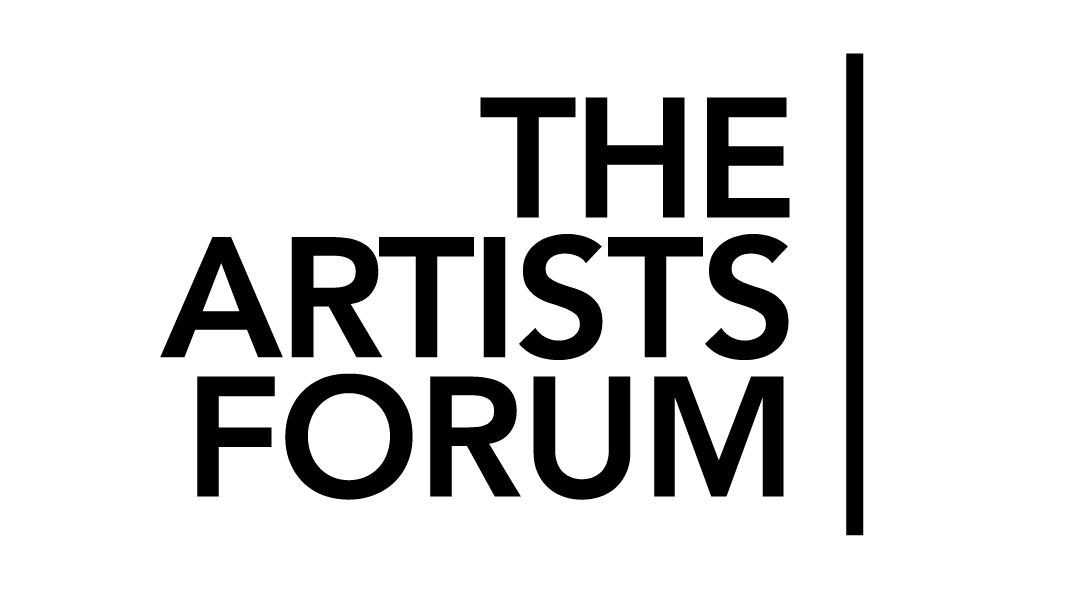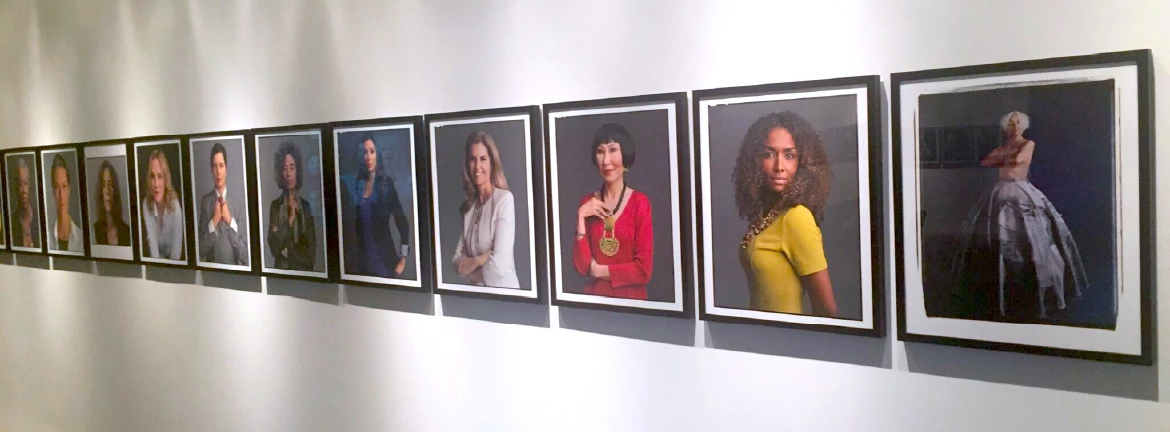Written by Charles Innis for THE ARTISTS FORUM MAGAZINE
Edited by Amos White V for THE ARTISTS FORUM, INC
Photos: Charles Innis and Fisher Laundau Center for Art
REVIEWER RATING:
4 out of 5 stars
THE WOMEN’S LIST: 50 PORTRAITS & FILM PROJECTION
QUEENS, NY (July 8, 2016) Viewing each portrait in The Women’s List: 50 Portraits & Film Projection is like peering into different windows. Behind every pane of glass is the character and essence of a human being. Taken by Timothy Greenfield-Sanders over the course of 35 years, the 50 large format photographs depict extraordinary women who, in their work, shaped contemporary society.

Projected on one wall of the gallery is a short documentary that shows interviews from fifteen of the photographed subjects. It originally aired on PBS’s American Master’s series in September 2015, and was also directed by Greenfield-Sanders. Each of the color and black-and-white portraits evokes a different feeling and demands utmost attention.
Every woman is shown in a different mood, whether she is smiling, glaring, gazing morosely into space, or staring blankly at the camera. With Toni Morrison’s portrait, her severe and penetrating gaze has an arresting affect. Debbie Harry, posed with her hands on her hips, seems like she won’t accept anybody’s nonsense. The more serene portraits, like the photo of actress Clare Danes, have a sensitive quality.

While the portraits are striking at an individual, technical level, the women depicted in The Women’s List are striking as human beings. When viewed together, the 50 portraits and film projection illustrate how women of numerous backgrounds have advanced virtually every field of study imaginable.
One significant aspect of this selection of women is how diverse and eclectic they are as innovators. Celebrated artists, writers, scientists, comediennes, athletes and politicians like Michelle Obama, Hilary Clinton, Beyoncé, Amy Tan, Elizabeth Holmes, Serena Williams, Margaret Cho, and Nancy Pelosi are included.
Some portraits are of women who made history or took profound strides forward for feminism and racial equality. There’s China Machado, the first non-Caucasian fashion model to appear on the cover of a major American magazine. Prominent civil rights lawyer Gloria Allred is also depicted.
A few women are largely unknown. African-American commercial pilot Nia Wordlaw is one. Dawn Halfaker, a former military police officer who lost her right arm in the Iraq War, is another.


The choice of these fifty women does not seem to stem from any superficial idea of success. Success, in this context, has to do with how these women conquered their areas of work in a patriarchal world. They triumphed as human beings.
In one of the film’s interviews, Academy Award nominated actress Rosie Perez recalls growing up in a convent and acting in plays as a child. Shonda Rhimes, the creator and executive producer of Grey’s Anatomy, says she refuses to succumb to obstacles. “When somebody is saying no to you and closing the door on your face that doesn’t mean you’re not good,” she says. “That mean’s it’s their problem and you just go on to the next thing.”

Each portrait has a plain grey background with the subject front and center. The simplicity places appropriate attention on the individual, but also highlights how varied they are as a set of characters. There’s a portrait of prolific punk musician, poet, and author Patti Smith, with her wispy grey hair and wise, pale eyes. The full-body portrait of Japanese fashion designer Rei Kawakubo has an enigmatic quality. She stands a few feet away from the camera wearing an all black gown in a contemplative stance, her right hand placed on her chin.
Viewing them all together, side-by-side, while listening to the interviews has a cumulative effect. The strength and significance of these women seems to emanate from the pictures themselves.
It’s on view from June 16th to November 28th at the Fisher Landau Center for Art in Long Island City, Queens.
For more information about Fisher Laundau Center for Art, visit: flcart.org/past/TGS-the-womens-list.php


